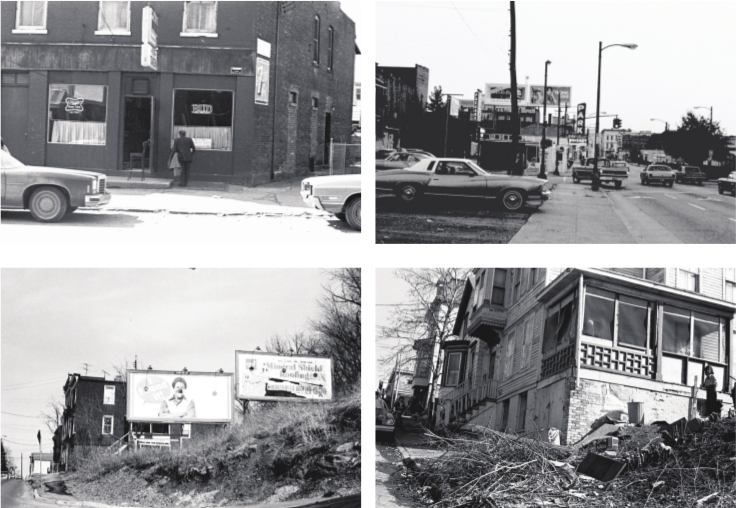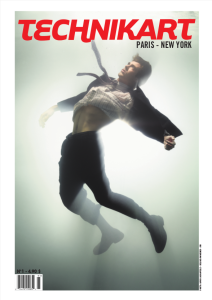Chronicles of a Suburban Past Sheldo’s America
I am from the suburbs, a pure product of the last half of what was called the American century, and my world – the world I come from – is unrecognizable today… at least to those who grew up there, to those who dreamt it in the first place… Now I live in Paris… but that’s another story…
I am from the suburbs, that penultimate example of the American dream that permeated so much of late 20th century thought. I grew up in a world fashioned by Robert Moses and the two New York World’s Fair of ’39 and ’64. A technological dream-world leading directly to a backyard and garden, a technological soci-
ety aimed at cutting itself off from the technology that made it possible – the highways all ending in some leafy cul-de-sac where each individual ruled their own natural kingdom, but no kingdom of ends were these…
This had been the future, then… The roads that are now all pot-holed, the bridges rusting… This had been the promised land, after the amusement parks closed down, after the highways were built, where else could you go ?
The big bridge cross the Hudson at Tappan Zee opened in the mid-50’s, the only amusement park in the Bronx closed a couple of years later. Where it stood there’s now a place called CO-OP city, right in the middle of a swamp when you pass by the New England thruway but it must have been beautiful wetlands at one time. This is the far reaches of the Bronx, half way between the white sands and 30’s style buildings of Orchard Beach and the neighborhood of City Island, a still small fishing village with boats, Latino music and deep fried fish. Today, now with Coney Island so small and far away, the only real place to go for rides and the beach would be farther up the Sound, outside the city limits heading up the inland coast roads through small suburban towns… following the old Boston Post Road, US 1, to Rye Beach and its old playground… still there in all its 20’s splendor, still sitting on its beach and boardwalk and loudly shining itself into the Sound each summer evening.
But that’s another story and not the direction I come from. Back in 1961 my family crossed the Hudson to the other side, headed away from the Sound toward Jersey, but farther north, where New York begins again, arriving in Rockland County where Edward Hopper was born, where Kurt Weill and Lotte Lenya moved when they came to the US… where, in Nyack, you can still walk along the wide Hudson River …or where you can go inland, like my parents, to Spring Valley… “Easy to reach by car or bus, not really by train, but it
ain’t much” as a 70’s song proclaimed… “Where the Thruway meets the Garden State, Palisades Parkway too,” surrounded by interstates, I grew… Spring Valley.
It was the dream incarnate, 20,000 people in the early 50’s, apple orchards and small farms and a particular summer life of bungalow colonies, it was far from the city, but only 45 minutes away, and by the 60’s it had transformed into one of those bedroom communinies that were making their mark on what it meant to be a New Yorker… population doubling every few years, schools growing, it was essentially white and essentially Jewish.
Spring Valley was our center, the place you walked to on Saturday afternoon for a piece of pizza, to see your friends. And your friends came from all over – but all was within walking distance because there was no public transportation – places, sleepy ones like Monsey or where I lived, a little hamlet called Hillcrest about a mile north on Route 45.
Then things began to change, or maybe they were always changing. I remember coming back from college and, I guess it was around ’73 or so, when I first noticed that a struggling deli turned beer-boiled-hot-dog place had become Mexican… The village could fall and could be rebuilt a thousand times, but this one change stuck… stuck so well it’s still here today – El Bandido – something made this restaurant with all its fake stucco interiors and mariachi music more natural than what had come before.
It was here, if anywhere it occurred, the line where dreams change hands and those dreaming change places.
The change was so great that the New York Times noticed, writing in 2001 that, since 1980, “…the proportion of whites… dropped to 21 percent… the number of black residents jumped ninefold, to 49 percent… The number of Asians… has grown by more than 260 percent and Hispanics by 366 percent”. And this in the small hamlet of Hillcrest, caught between the village of “…Spring Valley… overcrowded housing, drugs and economic redevelopment” and to “the southwest and northeast… the Orthodox and Hasidic enclaves of Monsey and New Square.”
This suburb changed.
No longer a suburb at all, it had rotted away organically, ceasing to be a “bedroom com-
munity” of the city, but instead assumed a personality all its own.
It seemed to acquire an identity in aging and decaying (quickly, all to quickly like a passing life) that was more than it was created to have. What was left for us was a shell of our memories, but for them, they that inhabit this place now, what is here for them is something vibrant in a way we could never understand, vibrant with a beat we never heard, different, cut from the present in a way we could never quite place.
The earth might have protested, but it was mute.
My memories might have protested, but they were not understood, they spoke a different language, an unknown one.
What language will you speak when you
come here ?
English ? Not really, Creole or Yiddish, or maybe some dialect of Spanish that encompasses the strange foods sold in the local supermarkets. What about a strictly Orthodox, women-separated-from-men, Rabbi super-
vised, Kosher Sushi bar ? Or try the Haitian mechanic who keeps a thousand cars in his back yard, and receives in front, a bus load of Hasidic women, driven to him by their Rabbi, all because this mechanic is also the cheapest and best tailor in the surrounding streets.
Spring Valley, where 14th Century Eastern Europe, meets the tropical world in an arctic and desolate winter. How hard to be from the Caribbean when it is below freezing like the Eastern European steppes, covered with ice and snow for weeks on end. How difficult to be a Hasid in that tropical summer, wrapped in your layers of medieval garments when the temperature is hot enough to boil water, the humidity near 100% and you don’t have any right to take off your leggings or black flapping coats and hats.
Spring Valley, last stop up from Hoboken on the one track Pascack Valley Line. Spring Valley whose mayor George Darden is vice president of the World Conference of Mayors and whose middle initial is claimed by some to be “O”, and has been rumored to sign official papers G.O.D.
Spring Valley, a line where dreams become reality, or illusion, where dreams becomes someone else’s, where you lose possession, where what was mine, becomes yours or the others, or just someone else.
There is a moment when people say a dream has become reality.
There is another moment when they say that same dream has died.
But, I realize coming back here, that there is a moment in-between, when the dream is neither alive nor dead, when it is not possessed by someone. When this dream is not possessed it has no signification, it has no value, there is no one who understands it, or grabs it, or makes it their own. It is there to be taken, or lost, or molded again and given life.
This is a dream – not the next fashion, the next website, the next trend – and yet this idea of dreaming is more real than all of the others.
This dream is the world I came from. On that line between wishes and promise.
It does not exist anymore, not the way I knew it, but it was here I grew up, here I learned to define my life. It is different now, not better, not worse (though far more populated)…it is simply what it is.
COME AND VISIT !
REPORT BY SHELDON HEITNER


